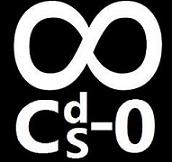I have found an interesting article with some torque profiles of a track cyclist during a standing start measured at 200Hz using a SRM Torque Box. I have found this very interesting because nearly all of the studies about pedaling in cycling are conducted at constant cadence and power outpout because they want to study stationary state efficiency but this one shows how the torque is affected by a variable cadence and power. As you can see the shape of the torque profiles are pretty much the same independently of the cadence so the steady state pedaling model is a good aproximation for acceleration, even though, a cadence-torque plot could be useful to obtain an even better approximation. I will consider these torque profiles for a standing start load case, the severer that a bicycle frame should withstand but first I need to develop a model to calculate total pedaling forces from propulsive forces. Here you can see the article:
I don't know who is the rider that generated those torque profiles but his peak torque is about 450Nm. It's a really high value so I will scale later those plots depending on the load case. I have read that Sir Chris Hoy can generate up to 600Nm of peak torque during an standing start, something really impresive. You can see him making his chain suffer here:
That's all for today. Greetings



